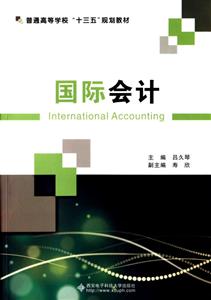国际会计:::
节选
[
《国际会计》: The purchase method is the normal practice, while the pooling of interest methodfor business combination is allowed in limited circumstance, or is rarely used in the Netherlands.Goodwill can be treated in many ways, while most companies charge it toreserves.Or goodwill is capitalized and amortized over its estimated useful life, up to amaximum of 20 years.The equity method is required when investor exercisessignificant influence on business and financial policy (Choi and Meek, 2011).Jointventure could use either equity method or proportional consolidation.As for translationof foreign currency, the closing rate is used for balance sheet of a foreign entity that isindependent of the parent, while the closing rate or average rate is used for incomestatement.Translation adjustments are charged to shareholders’ equity.The temporalmethod is used for foreign entities that are not independent of the parent, with thetranslation adjustment charged to income. Current values are used for tangible assets such as inventory and depreciableassets.Companies using current values should provide additional historical costinformation on the notes.Historical cost is also acceptable.When historical cost isused for inventory, it is stated at the lower of cost or market, with cost determined by FIFO, LIFO, average, or even base stock methods.Research and development cost arecapitalized only when the amounts are recoverable and sufficiently certain.Leases,contingencies, and pension costs are generally measured as they are in the United Kingdom and the United States.Deferred income taxes are recognized on the basis of the comprehensive allocation concept and measured according to the liability method. ……
]
内容简介
[
本书采用英文的形式, 介绍国际财务会计和国际管理会计的问题。主要介绍了世界上主要国家的会计制度的差异及其形成原因以及世界范围内的会计模式, 揭示了会计国际化协调的程度和进展情况, 分析了跨国公司经营中遇到的财务会计和管理会计问题等内容。
]
目录
Chapter 1 IntroductionLearning objective1.1 International Accounting Issues1.1.1 Two examples1.1.2 Additional requirements1.1.3 International accounting language1.2 The International Development of Double Entry System1.3 The Development History of International Accounting1.4 Definition of International Accounting1.5 Content of International Accounting1.5.1 Basic content1.5.2 International accounting in recent years1.6 The Growing Internationalization of Capital Markets1.6.1 The growing internationalization of capital markets1.6.2 The main international capital markets1.6.3 Chinese publicly traded company worldwideTerms of the ChapterDiscussion QuestionsTrue or FalseMultiple ChoiceCase AnalysisChapter 2 Development and ClassificationLearning objective2.1 Development2.1.1 Factors influencing accounting development2.1.2 Related factors2.2 Classification2.2.1 Deductive approach2.2.2 Inductive approach2.3 Conclusion2.3.1 Stable classification of accounting systems2.3.2 Accounting practice at the national level or transnational level2.3.3 Many distinctions of accounting at the national level2.3.4 Fair presentation vs.legal compliance accountingTerms of the ChapterDiscussion QuestionsTrue or FalseMultiple ChoiceCase AnalysisChapter 3 Accounting in Developed CountriesLearning objective3.1 Basic concepts3.1.1 Accounting standards3.1.2 Accounting standards and practices3.1.3 Fair presentation and legal compliance accounting3.2 France3.2.1 Introduction3.2.2 Accounting regulation and enforcement3.2.3 Financial reporting3.2.4 Accounting measurement3.3 Germany3.3.1 Introduction3.3.2 Accounting regulation and enforcement3.3.3 Financial reporting3.3.4 Accounting measurement3.4 Japan3.4.1 Introduction3.4.2 Accounting regulation and enforcement3.4.3 Financial repoffing3.4.4 Accounting measurement3.5 The Netherlands3.5.1 Introduction3.5.2 Accounting regulation and enforcement3.5.3 Financial reporting3.5.4 Accounting measurement3.6 The United Kingdom3.6.1 Introduction3.6.2 Accounting regulation and enforcement3.6.3 Financial reporting3.6.4 Accounting measurement3.7 The United States3.7.1 Introduction3.7.2 Accounting regulation and enforcement3.7.3 Financial reporting3.7.4 Accounting measurement3.8 Comparison of Accounting MeasurementTerms of the ChapterDiscussion QuestionsTrue or FalseMultiple ChoiceCase AnalysisRequiredChapter 4 Accounting in Emerging Market CountriesLearning objective4.1 Introduction4.2 Czech Republic4.2.1 Introduction4.2.2 Accounting regulation and enforcement4.2.3 Financial reporting4.2.4 Accountingmeasurement4.3 Taiwan Area4.3.1 Introduction4.3.2 Accounting regulation and enforcement4.3.3 Financial reporting4.3.4 Accounting measurement4.4 Mexico4.4.1 Introduction4.4.2 Accounting regulation and enforcement4.4.3 Financial reporting4.4.4 Accounting measurement4.5 China4.5.1 Introduction4.5.2 Accounting regulation and enforcement4.5.3 Financial reporting4.5.4 Accounting measurementTerms of the ChapterDiscussion QuestionsTrue or FalseMultiple ChoiceCase AnalysisChapter5 Reporting and DisclosureLearning objective5.1 Accounting Measurement and Disclosure5.2 Development and Disclosure5.2.1 Voluntary disclosure5.2.2 Mandatory disclosure5.2.3 Voluntary vs.mandatory disclosure5.2.4 U.S.SEC financial reporting debate5.3 Reporting and Disclosure Practice5.3.1 Forwardlooking information5.3.2 Segment disclosures5.3.3 Cash flow information5.3.4 Social responsibility disclosure5.3.5 Special disclosures for non—domestic financial statement users5.3.6 Corporate governance disclosureTerms of the ChapterDiscussion QuestionsTrue or FalseMultiple ChoiceCase AnalysisChapter 6 International Accounting Harmonization or ConvergenceLearning objective6.1 A survey of International Harmonization6.1.1 Harmonization6.1.2 Criticism and evaluation of international harmonization6.2 International Accounting Standards Board6.2.1 Before IASB and IASC’s work6.2.2 IASB’s work6.2.3 IASB’s harmonization or convergence effort6.3 International Federation of Accountants (IFAC)6.4 International Organization of Securities Commissions(IOSCO)6.5 European Union (EU)6.5.1 EU directive6.5.2 EU’s standard—setting proceduresTerms of the ChapterTrue or FalseMultiple ChoiceCase AnalysisChapter 7 Foreign Currency TranslationLearning objective7.1 Translation and Its Reasons7.2 Translation of Transactions vs.Translation of Financial Statement7.3 Selecting Foreign Currency Rate7.4 Translation Methods7.4.1 Current—noncurrent method7.4.2 Monetary—nonmonetary method7.4.3 Temporal method7.4.4 Current rate method7.4.5 Compare and contrast the features of four methods7.5 Translation Gain or Loss7.6 Translation Accounting Development and U.S.A Standards No.527.6.1 International accounting standards7.6.2 Translation accounting development and U.S.A Standard No.527.6.3 Relationship between foreign currency translation and inflationTerms of the ChapterDiscussion QuestionsTrue or FalseMultiple ChoiceCase Analysis……Chapter 8 Changing Prices AccountingChapter 9 International Financial Statement AnalysisChapter 10 The Governance of Multinational EnterprisesChapter 11 International auditingChapter 12 International Management AccountingChapter 13 International Taxation and Transfer priceReferenceSome Helpful Websites
封面

书名:国际会计:::
作者:吕久琴主编
页数:320
定价:¥36.0
出版社:西安电子科技大学出版社
出版日期:2015-11-01
ISBN:9787560639178
PDF电子书大小:129MB 高清扫描完整版
